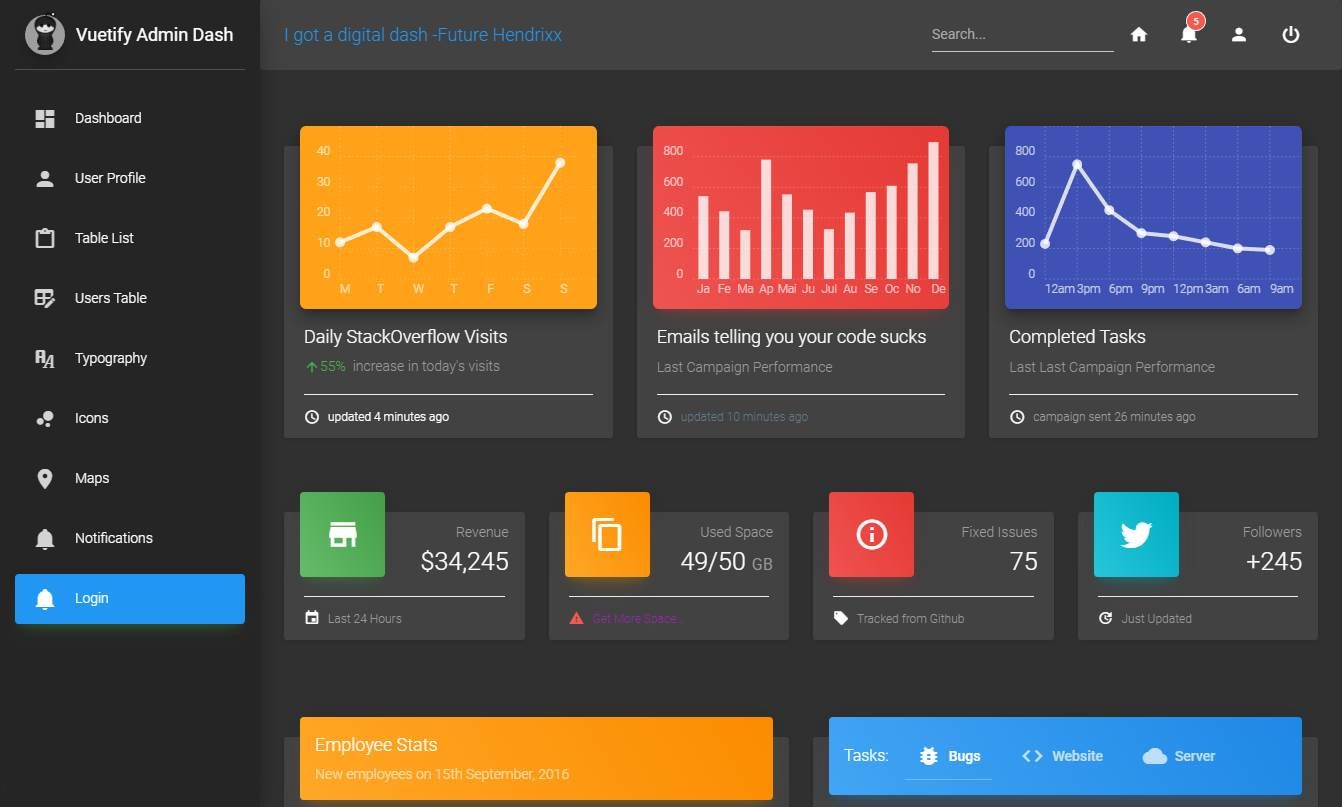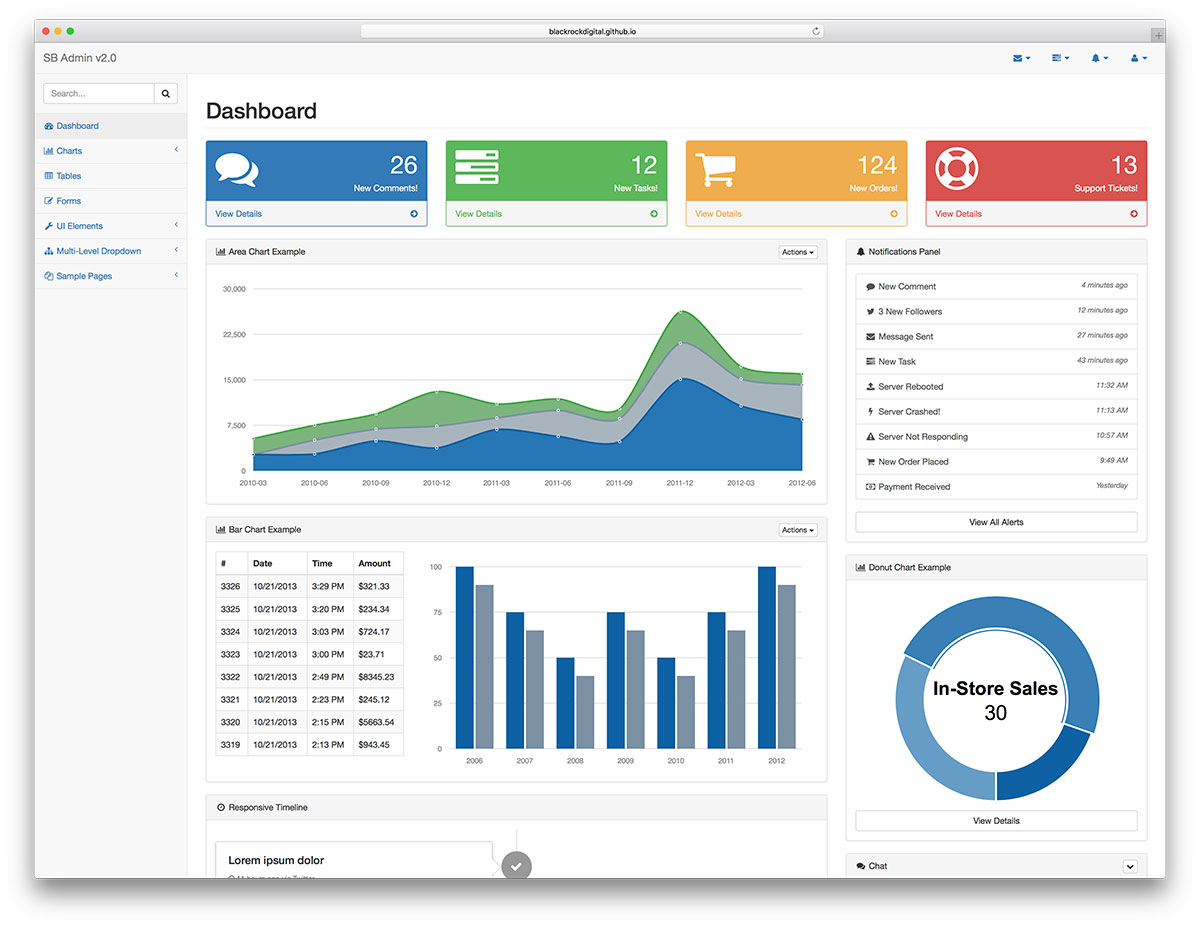
It’s all randomly generated data that has literally no meaning.
#SIMPLE CSS DASHBOARD CODE#
I’ll explain how you go about using the Developer Tools in light details as well as the code this dashboard uses for future reference. I’m going to show a dashboard that I just randomly created with a handful of panels that have HTML and CSS markups. These have the same pros and cons as the other inline method. Prebuilt panels of inline CSS could, however, lead to unwanted CSS overrides and these are restricted to a dashboard, unlike some CSS that can be applied to an entire app.Īnother way of doing inline CSS is to use the HTML panel element to apply the style itself, like so: before they’ll be picked up.Īnother method is inline CSS using HTML panels, just like my example in this blog! The advantages are that it can be used for testing out CSS, users do not need permission to the backend, and they can be saved as prebuilt panels and used in various dashboards. The downside is that users need to have access to the backend in order to upload these files, and they also require either a debug/refresh, bump, etc. These can be used throughout the environment, they’re more generally more organized, and reusable. The most standard way is to create a static stylesheet, similar to what I just described above. StyleSheets can live within or outside of the app and be referred to using a relative path: stylesheet=".css"Īlso, let’s go over different ways to use CSS within Splunk and the pros and cons: More than one StyleSheet can be applied to the same dashboard. Using a relative URI, you are able to open a StyleSheet directly in a browser window: - this is also true for JS files.

Generic styles come from the bootstrap-enterprise.css file, which you can notice when using the Developer Tools in the browser. Let me fill you in on just a few things about StyleSheets before we get started.Įditing the dashboard.css file will apply those styles across all dashboards within the app without having to add the stylesheet="dashboard.css" in any dashboard. We all know that there are rows and panels and charts and whatnot, but what about when you want to do some customization, like change the font size or add a border? A lot of applications have StyleSteets (.css) and JavaScript (.js) files that can be used for custom visualizations, however you can use inline CSS and HTML within SimpleXML to markup a dashboard as needed! JavaScript can not be done inline and must be done with a SimpleXML extension, however it can be done inline with a Splunk HTML dashboard, however those lose a lot of SimpleXML behavior and is irreversible, so use caution. They improve with every new version of Splunk. initializing DashboardLayout component.SimpleXML dashboards have been around for quite a while now, and you can do quite a bit with them. Import from './chart-component' Ĭhart.Inject(ColumnSeries, DataLabel, Category, Legend, Tooltip) importing DashboardLayout from ej2-layouts |– use the Dashboard Layout component, we need to import it from the packages from the npm and append it to an element as shown in the following code example. The list of dependencies required to render the Dashboard Layout component are as follows.
#SIMPLE CSS DASHBOARD HOW TO#
You can get the demo sample from the GitHub repository: How to create a dynamic and responsive dashboard Initialize the Dashboard Layout component Let’s try making a dashboard as shown in the following screenshot by using the Dashboard Layout component.Ī simple dashboard with Grid, Chart and Map components. You can place the component in a grid-structured layout at a desired place and design the layout by live-editing the panels with the help of reordering, drag and drop, resizing, add new, and removing functionalities. It will create a dynamic dashboard quickly with the expected layout and allow you to think about only the data integration and projection.

You’ll also need to present the dashboard with a responsive and adaptive layout, so it can be viewed at any resolution in any device without data loss.Ĭonsidering all these challenges, the Syncfusion Dashboard Layout component was implemented. But designing a dashboard is a challenging job when you need features that let users place components, drag-and-drop, resize, and reorder.

BoldSign – Electronic Signature Softwareĭashboards are very useful to track strategic data, key performance indicators, and important metrics from several data sources and visually present them.


 0 kommentar(er)
0 kommentar(er)
